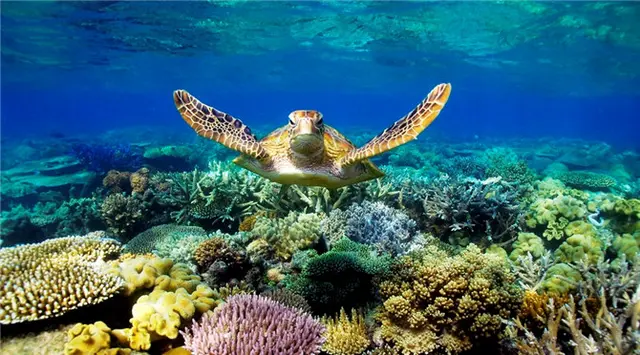Coral bleaching on the world heritage listed Great Barrier Reef is worse than feared after senior scientists have discovered that the impact is further south than first thought.
Human induced climate change has been increasing the frequency of mass coral bleaching events, further strengthened by the El Nino re-enforced warm water travelling through the equatorial pacific, causing mass bleaching events in Fiji, New Caledonia and Kiribati, among others.
Convenor of the National Coral Bleaching Taskforce, James Cook university professor of coral reef studies Terry Hughes told local media on Thursday the worst bleaching event to hit the tourist attraction is as far south as Townsville. Surveys of the 74 reefs between Cairns and Townsville show, on average, 25 to 30 percent of coral has bleached.
"We were hoping to find a southern boundary somewhere between Townsville and Cairns... we (now) know that boundary is further south," Hughes said.
Hughes had been hoping the southern reaches of the world heritage listed site had been spared due to cloudy weather cooling water temperatures.
Coral bleaching occurs when stress such as heat caused the animal to expel the symbiotic algae, loosing vital nutrients and energy reserves, thus color, leading to the wide scale loss of productive habitats for fish.
The coral host then becomes weak and susceptible to disease. When bleaching is prolonged, the animal can die.
Recent research suggests corals with high levels of fat or other energy reserves can withstand annual bleaching events, which is critical to predicting the persistence of corals and their capacity to recover from more frequent events resulting from climate change.
On Tuesday, Hughes described the current bleaching event as the worst experienced, surpassing the mass events of 2002 and 1998 after finding 95 percent of the marine park's northern reaches, between Cairns and Papua New Guinea, had bleached with a 50 percent mortality.
The northern section of the GBR is the most pristine of the reef system, widely used by the Australian authorities to argue against the reef being listed as "in danger" by UNESCO. Australia is due to report back to UNESCO on its reef management by the end of 2016 to remain off the "in danger" list.
Coral reefs are one of the most important and productive marine ecosystems that the world depends on for tourism and fisheries sustainability.
Severe bleaching events, however, may take highly impacted coral reefs up to 10 years to recover.
The Great Barrier Reef, the world's largest living ecosystem, spans some 2000 kilometers along Australia's northeastern coastline, bringing in billions of dollars in tourism revenue each year.
 简体中文
简体中文





